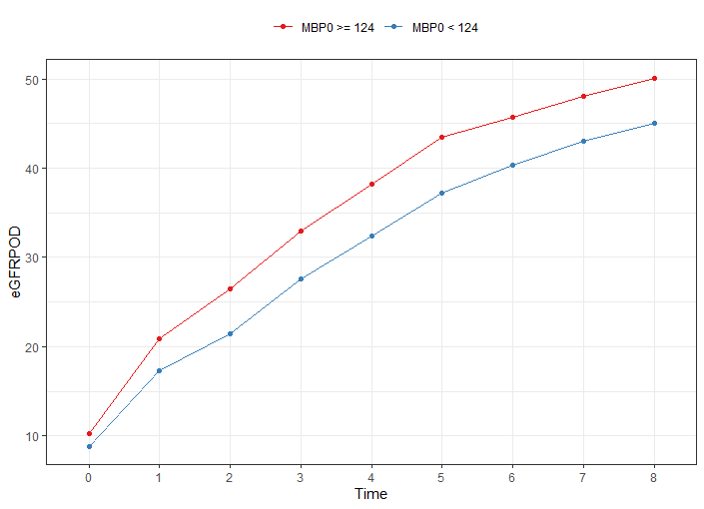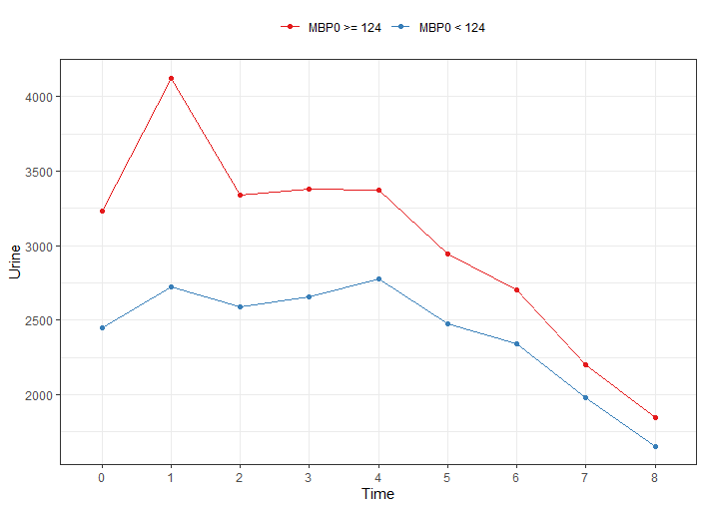The Effect of Baseline Blood Pressure on Early Graft Function in Deceased Donor Kidney Transplantation
B. Jun Bae1, C. Oh1, H. Ahn2
1Department of surgery, Ajou University Medical School, Suwon, Korea, Republic of, 2Department of Anesthesiology and Pain medicine, Ajou University Medical School, Suwon, Korea, Republic of
Meeting: 2022 American Transplant Congress
Abstract number: 763
Keywords: Graft function, Kidney transplantation, Monitoring
Topic: Clinical Science » Kidney » 35 - Kidney: Cardiovascular and Metabolic Complications
Session Information
Session Name: Kidney: Cardiovascular and Metabolic Complications
Session Type: Poster Abstract
Date: Saturday, June 4, 2022
Session Time: 5:30pm-7:00pm
 Presentation Time: 5:30pm-7:00pm
Presentation Time: 5:30pm-7:00pm
Location: Hynes Halls C & D
*Purpose: The adequate perfusion pressure to the graft is essential for proper graft function in kidney transplantation, especially in deceased donor kidney transplantation. Therefore, the analysis of intra-operative mean arterial pressure (MAP) is necessary to avoid inadequate perfusion and identify which anesthetic period can affect more significantly on early graft function. The aim of this study is to investigate the relationship between intra-operative MAP and early graft function in deceased donor kidney transplantation.
*Methods: We retrospectively analyzed 363 recipients who underwent deceased donor kidney transplantation from March 2010 to December 2020. Anesthetic monitoring data during intraoperative period was analyzed and basic clinical parameters were compared. After initial analysis, the recipients were divided into two groups according to median value of baseline MAP (124mmHg) and these two groups were analyzed.
*Results: The mean recipient age was 48.9 ± 10.3 and mean donor age was 48.2 ± 15.2. Anesthetic time was mean 285.9 ± 63.8 (min) and operation time was 226.4 ± 48.7 (min). Median value of baseline MAP and MAP at reperfusion were 124 mmHg and 88mmHg. High baseline MAP group showed high estimated glomerular filtration rate (eGFR) and urine output compared to low baseline MAP group during immediate postoperative 1 week. At postoperative day 5, eGFRs were 43.4 ± 26.7 and 37.3 ± 24.2 mL/min/1.73m2 respectively (p=0.022) and urine outputs were 2942.6 ± 1368.6 and 2474.3 ± 1199.1 mL respectively (p=0.001). We additionally analyzed the effect of MAP at reperfusion, and the result showed that there was no significant relationship between MAP at reperfusion and early graft function.
*Conclusions: In this retrospective study, MAP at reperfusion was not significantly related to early graft function and incidence of delayed graft function. In baseline MAP analysis, high baseline MAP group showed early recovery of eGFR and more urine output than low baseline MAP group As a result, high baseline MAP was related to early recovery of graft function in deceased donor kidney transplantation.
To cite this abstract in AMA style:
Bae BJun, Oh C, Ahn H. The Effect of Baseline Blood Pressure on Early Graft Function in Deceased Donor Kidney Transplantation [abstract]. Am J Transplant. 2022; 22 (suppl 3). https://atcmeetingabstracts.com/abstract/the-effect-of-baseline-blood-pressure-on-early-graft-function-in-deceased-donor-kidney-transplantation/. Accessed December 19, 2025.« Back to 2022 American Transplant Congress


